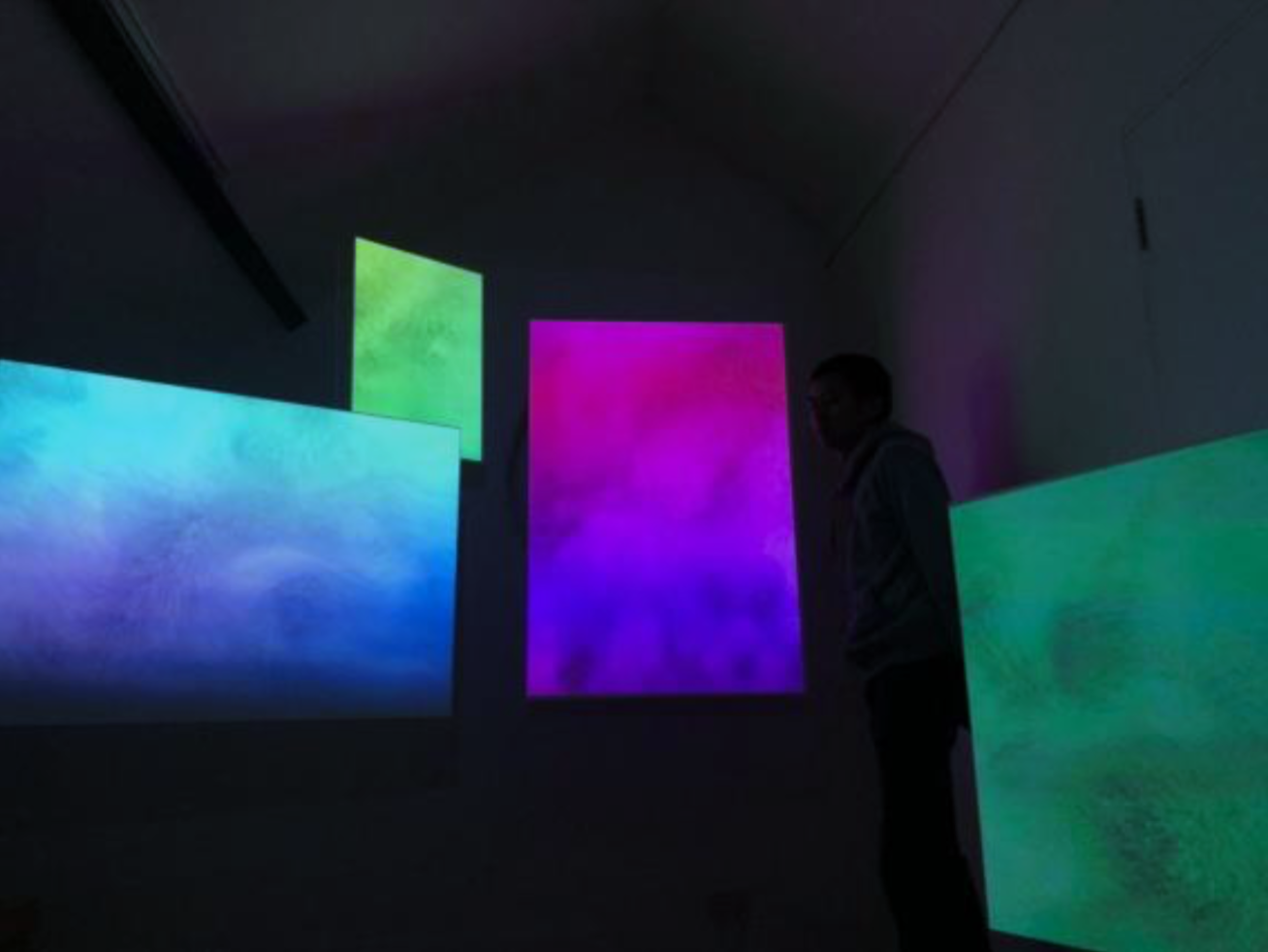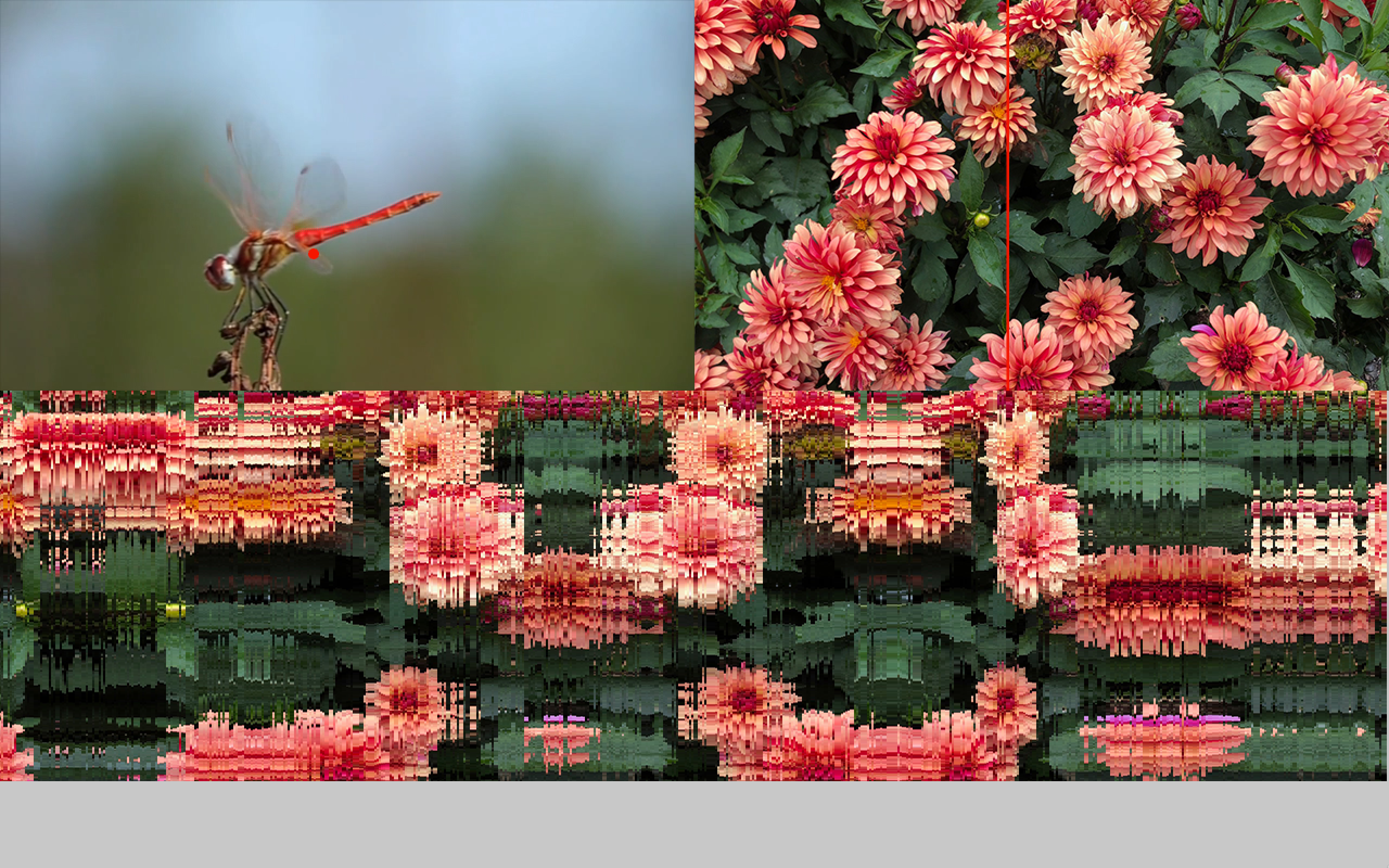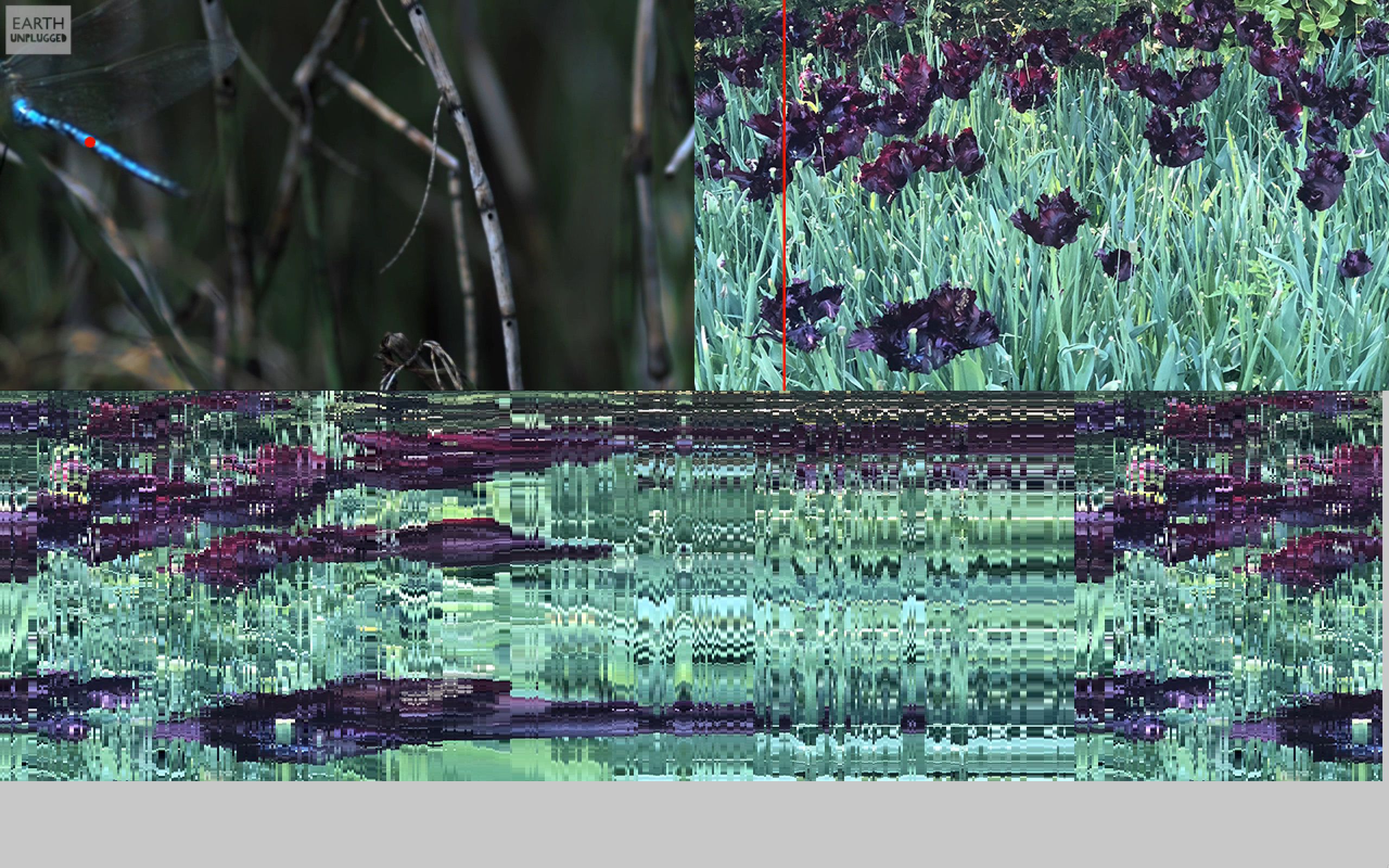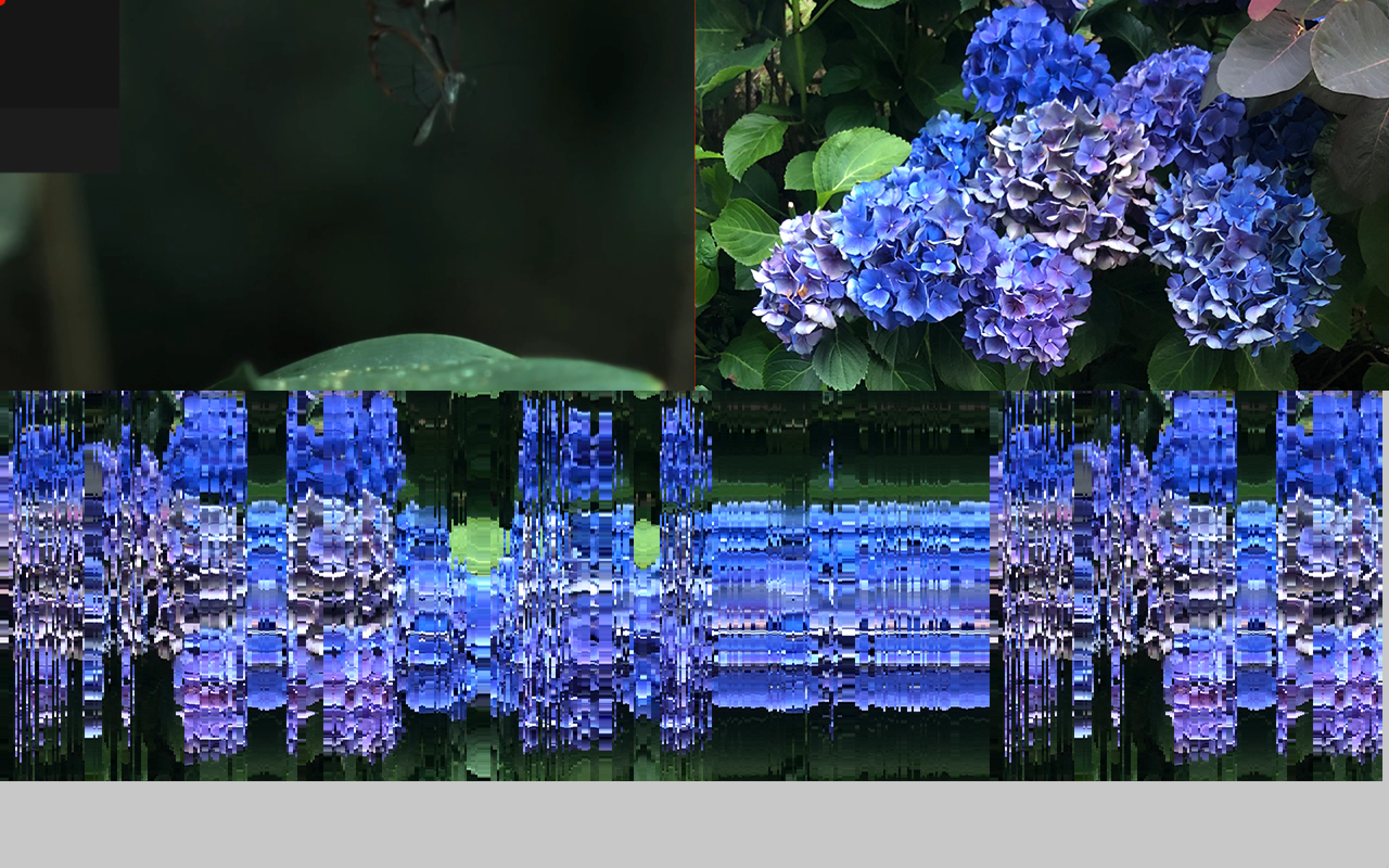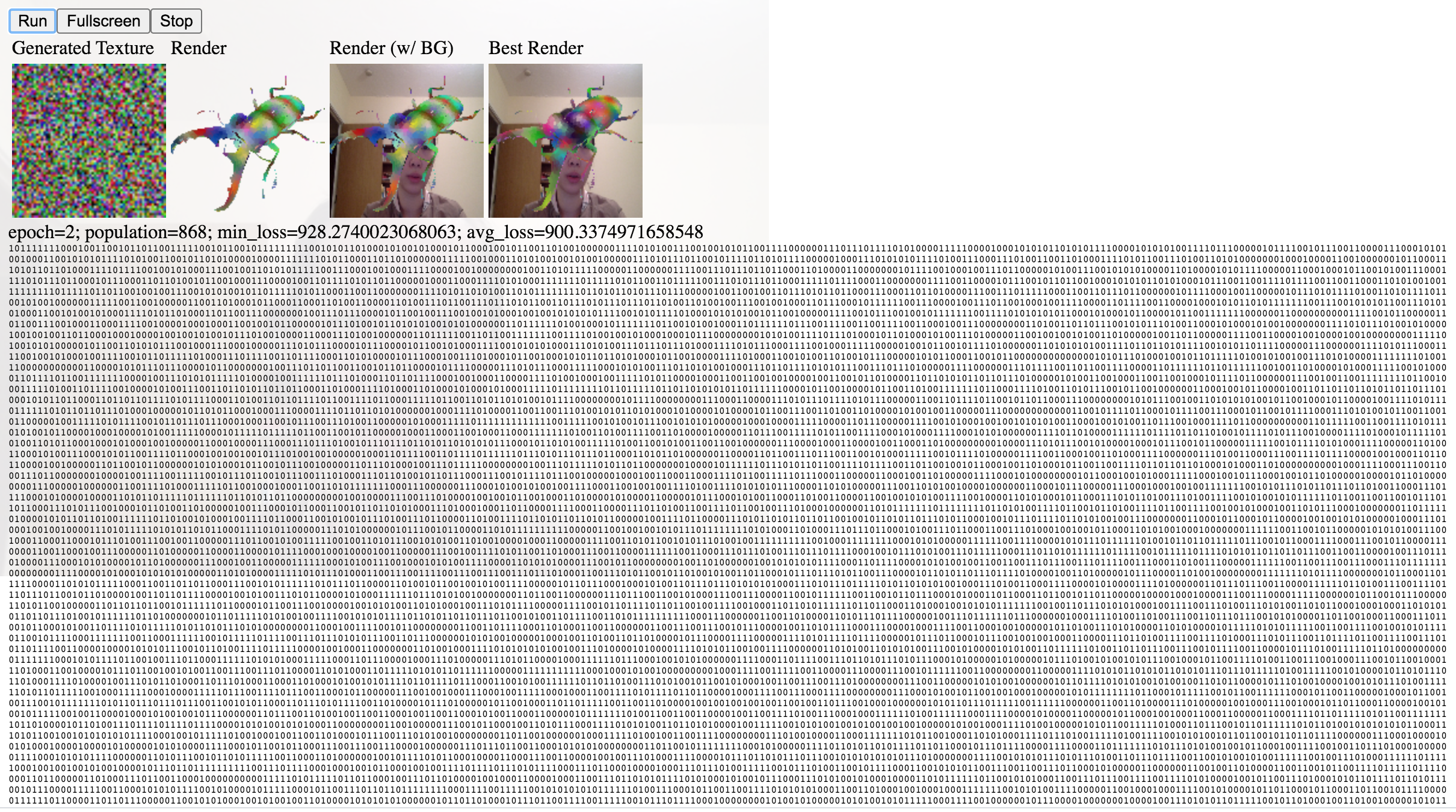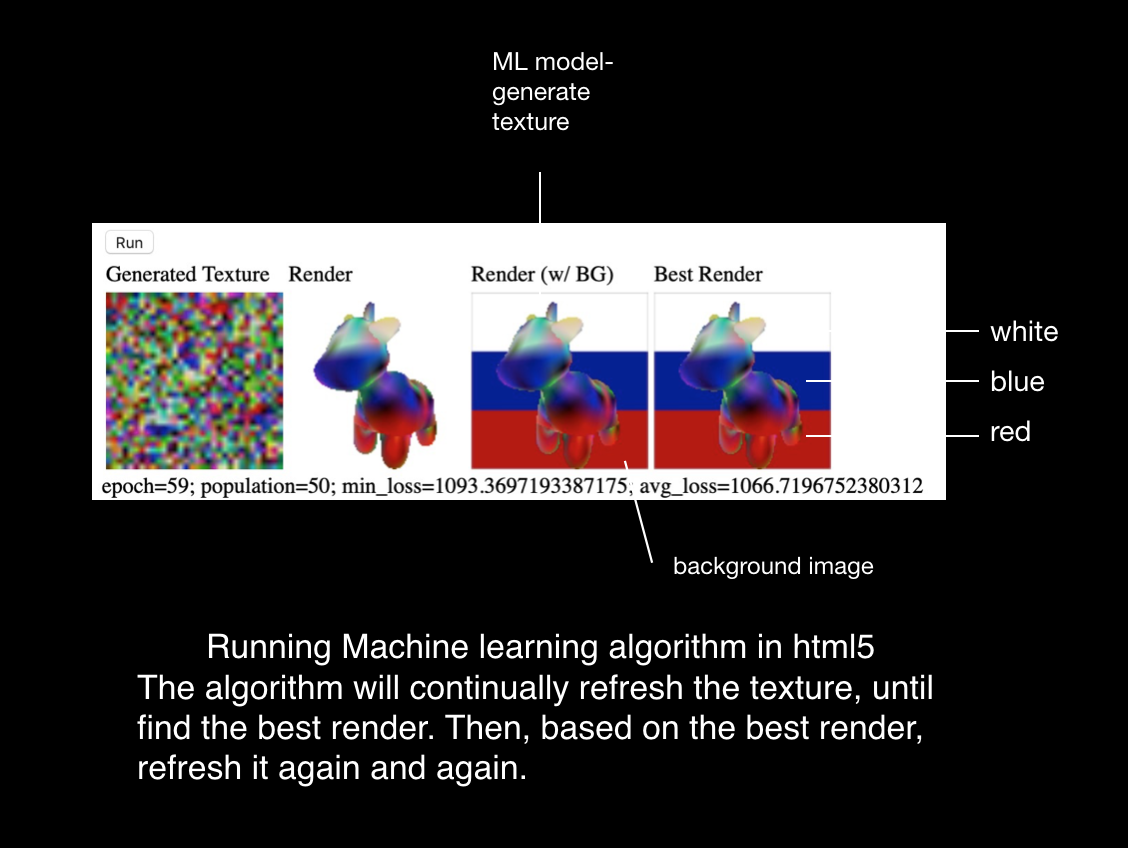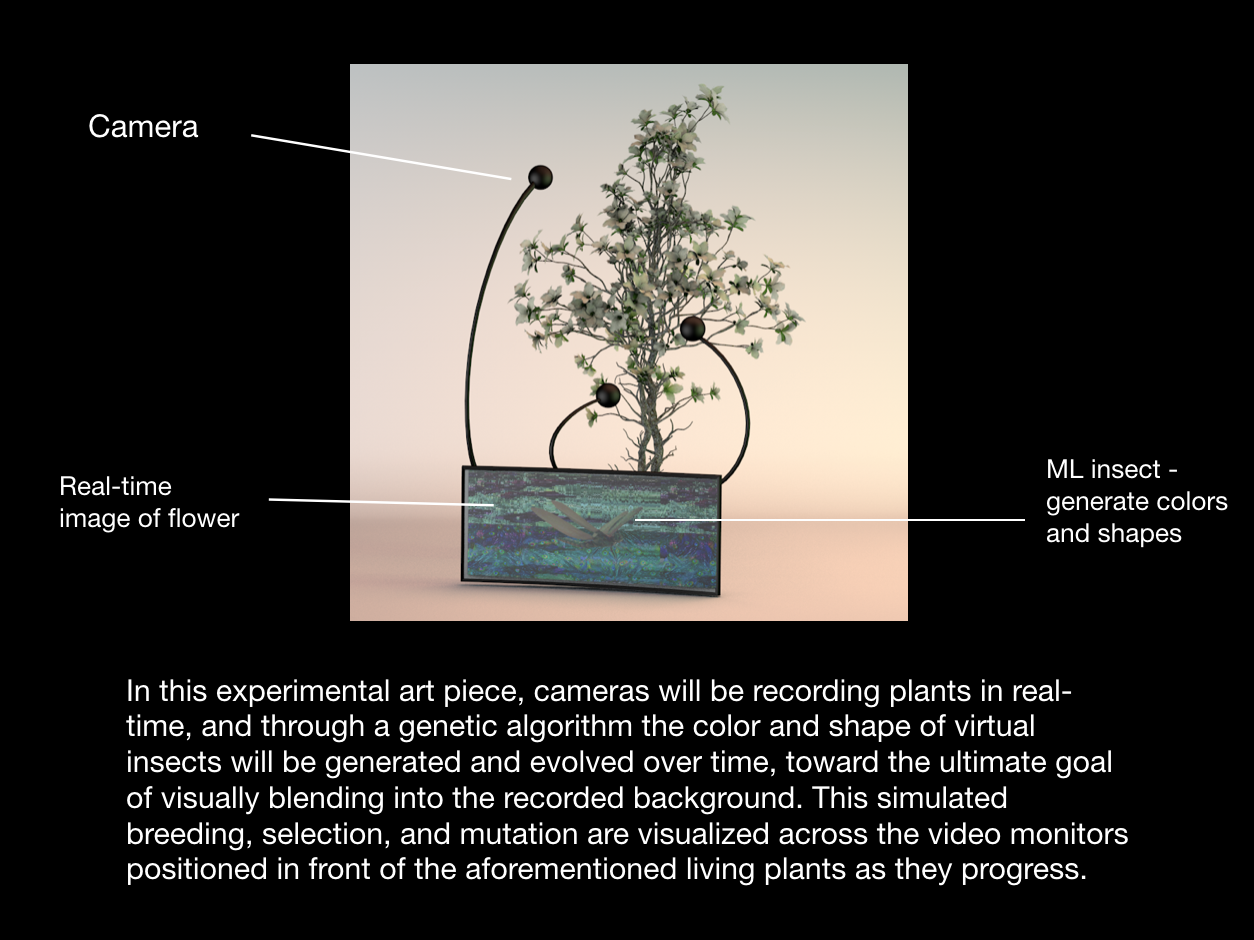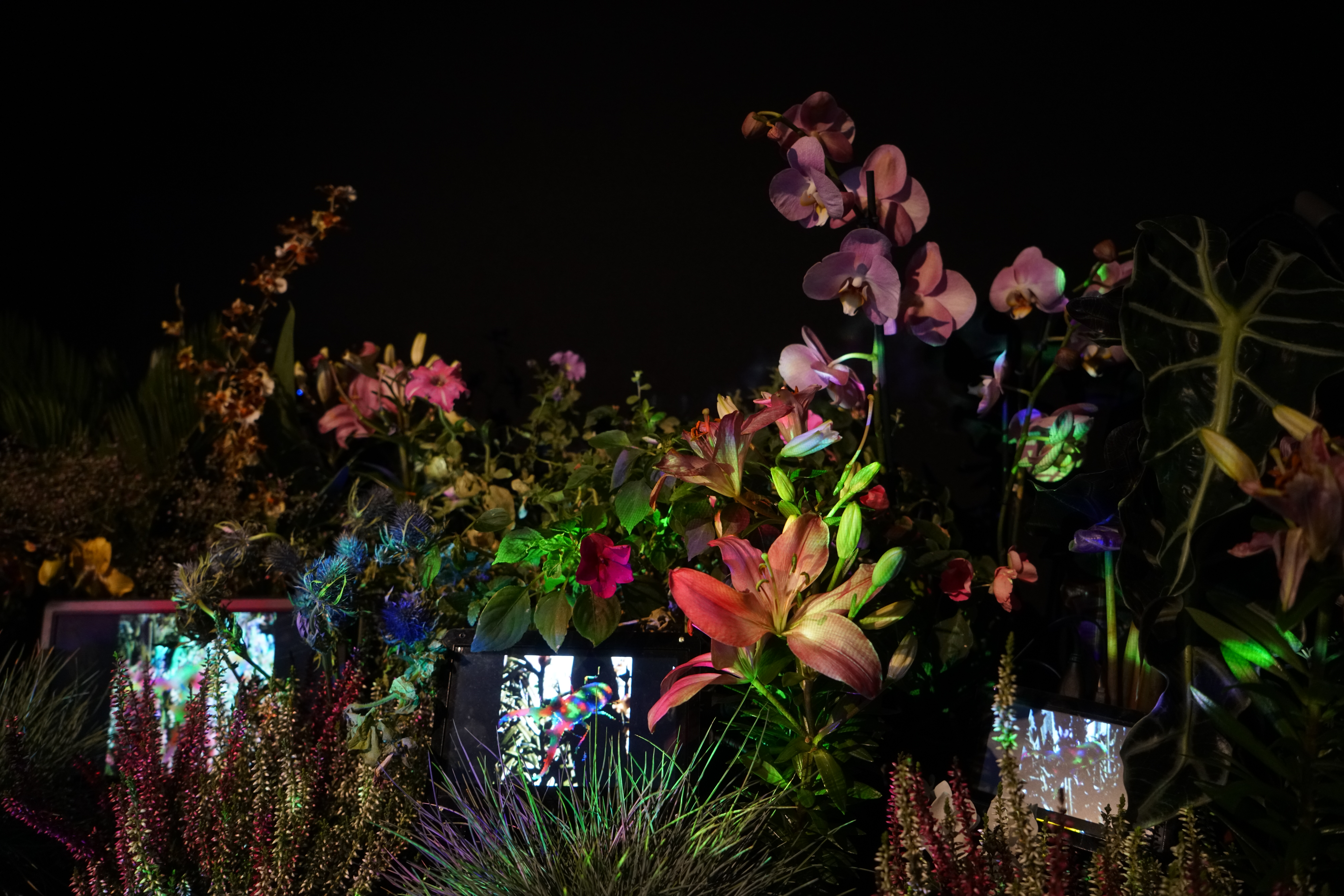Mimicry
Mimicry is a multi-screen video installation powered by computer algorithms(Machine learning) and inspired by mimicry in nature, the unique way of which species protect themselves by changing color and pattern in response to environment.
produced by: Ziwei Wu, Lingdong Huang
Introduction
Mimicry is a multi-screen video installation powered by computer algorithms and inspired by mimicry in nature, the unique way of which species protect themselves by changing color and pattern in response to environment.
In this experimental art piece, cameras will be recording plants in real-time, and through a genetic algorithm the color and shape of virtual insects will be generated and evolved over time, toward the ultimate goal of visually blending into the recorded background. This simulated breeding, selection, and mutation are visualized across the video monitors positioned in front of the aforementioned living plants as they progress.
In addition to exploring the intersection between nature and computation, we find that this work has relevance to the human society as well, as Walter Lippmann describes it in his book Public Opinion, people construct a pseudo- environment that is a subjective, biased, and necessarily abridged mental image of the world, and to a degree, everyone’s pseudo-environment is a fiction.
The setup of the installation is an homage to Nam June Paik ’s TV Garden. Paik imagined a future landscape where technology is an integral part of the natural world. We find that perspective compelling even today in 2020.
Exhibition view
Mimicry 1
The first version of project Mimicry which was titled as Mimicry1 was exhibited in the exhibition “IN THE DARK” in Cello factory. It is a mapping work with 4 screens which contain different fictive moving fur on the second floor. It was created by the Cinema 4D with some animal texture under the fur.
The inspiration of the work comes from the animal’s behavior. Mimicry is a unique way for animals to protect themselves in the nature. In some situations, certain species can change their skin color and pattern depending on the environment. Mimicry is based on nature, but not the original nature.
In this version of work, the information of bio, such as the texture fur of animal, was not used as the real data, but what comes into my mind is how to use bio as data.
Mimicry2
Then with the exploration of the concept of mimicry, the second version of this work was completed. Mimicry 2 was exhibited in the exhibition “SO, HOW IS THAT WORKING FOR YOU” in St-James church. It is a multi-screen work which is based on algorithm. In this work, bio information was used as data and I use algorithms to simulate nature. In details, I used the color track method in Open Framework to track the color of the insects to get the data of the movement. Then I simulate the insect’s movement on a flower image, which was captured in real nature, in order to assume an insect flying in my pre-set environment. Then, I use the slit-scan method in Open Framework to record the picture which contains the trajectory of biological movement. After using the insect information as the input data, I built a conversion form using the style transfer method in machine learning to combine the movement data picture and an animal texture picture. Next, I use Cinema 4D to put it back to the insect itself. At last, the completed installation came as an output result of this version of the exploration of the idea of mimicry. Just as I mentioned before, the practice in Mimicry2 is the use of algorithm to simulate nature.
Mimicry3
Finally, it leads to Mimicry3, a work cooperated with artist and programmer Lingdong Huang, which was exhibited in Chimera Garden. It is a multi-screen video installation powered by computer algorithms. At first, I researched Lippmann’s idea of public opinion. In his idea, people construct a pseudo-environment that is a subjective, biased and necessarily abridged mental image of the world, and to a degree, everyone’s pseudo-environment is a fiction. We live in a real environment, but we get the information from pseudo-environment like twitter trending, news, and so on. Then our behavior is mainly responsible for the pseudo-environment. Thus, the consequence directly influences the real environment. It a loop and happens all the time. People “live in the same world, but they think and feel in different ones.”
Then, in this experimental art piece, in order to use the pixel of plants as bio input data, I used cameras to record plants in real-time, and through a genetic algorithm as conversion form, the color and shape of virtual insects can be generated and it evolved toward the ultimate goal of visually blending into the recorded background. This simulated breeding, selection, and mutation are visualized across the video monitors positioned in front of the aforementioned living plants as they progress. Then, mapping a big insect on the real plants as consequence, make the whole things into a loop. if the audience watch it for a long time, they can see each part are slightly change because of the other.
Setup of the installation
The setup of the installation is an homage to Nam June Paik ’s TV Garden. Paik imagined a future landscape where technology is an integral part of the natural world in the 70s. We find that perspective compelling even today in 2020, so in this work, the computer algorithm generating a kind of new nature based on the learning of the ‘mimicry insects’. It is a kind of new nature, which is different from and it is the next step of simulate nature in Mimicry2. We hope to construct and image a future world that nature, technology and ML creature will live together.
Algorithms
According to the genetic algorithm (GA) which we used to develop the work Mimicry 3. It is a metaheuristic inspired by the process of natural selection which belongs to the larger class of evolutionary algorithms. Just as nature, it can be divided into three parts: breeding, selection and mutation. This is to simulate nature from a different perspective in algorithms.
Also, we create two algorithms work together. One algorithm trying to make the insect texture more like the nature. Another algorithm trying to ‘rate’ the first algorithm and find the best render. Then based on the best render, refresh it again and again. The relationship between two algorithms can be seen as insects and predator. Fighting against each other and evolve continually.
For the code part. Firstly I type it in Processing. It is too slow and not suitable for the raspberry pi. So I ask my friend Lingdong Huang for help. He help me change it into html and strengthen the details of it. We together deal with the 3D model and the animation of the insect. That’s how we collaborate.
We run the algorithm in html5 on raspberry pi, link it with camera. As you can see below. There is a 3d model. Then a background image with 3 colors behind it. On the top, the 3d model are mainly with white color, in the middle, the model are mainly with blue color, on the bottom, the model are mainly with red color. The algorithm will continually refresh the texture, until find the best render. Then, based on the best render, refresh it again and again.
Time - Change
Another key element in Mimicry3 is time. At first, it just like the picture on the left, have random color on it. Then after long time generate, it will looks really close to the back ground, like the right image.
Mimicry1,2,3
During my whole practice about Mimicry1, Mimicry2 and Mimicry3, I continually add new element in my work. From the beginning, nothing related to algorithm, only some colorful image and video, then contain the movement data to simulate nature. Finally using algorithm to create a new nature.
Conclusion
All in all, this research focus on biology as data and how to translate bio data in artwork. It gives a personal framework for artistic practices. And using the above methods to explain the development of my work Mimicry1, Mimicry2 and Mimicry3. For translating bio data into artwork, I use algorithms as a way to analyze nature, to learn and simulate nature, as well as algorithm as a new nature. My personal framework can be divided into input data, conversion form and output result. The three parts are mutually independent and intertwined together to achieve the structural stable of the artwork. In my own works, I have been continuously developing and thinking about the topic of bio as data, so that Mimicry has a progression in each version, and finally I ended the series with algorithm as new nature in the third version. In the future, I will still focus on bio as data, try to combine with different new technology for input data and output result such as big data about social media and 3D printed ceramic. Also, I will explore the possibility of bio as machinery and bio as new material. I attempt to conduct a variety of artistic practices based on theoretical support and a clear structure to explore different aspects of bio art. I will also try to cooperate with more experts in different fields to strive for innovation in technology and art.
References
Books and article :
Haraway, Donna Jeanne. Simians, Cyborgs, and Women: the reinvention of nature. New York: Routledge, 2015.
Hayles, Nancy Katherine. How We Became Posthuman: Virtual Bodies in Cybernetics, Literature and Informatics. Chicago: University of Chicago Press, 1999.
Kac, Eduardo. “What Bio Art Is: A Manifesto” 2017. http://www.ekac.org/manifesto_whatbioartis.html.
Lippmann, Walter. Public opinion. New York: Harcourt, Brace and Company Press, 1922.
Art works:
Catts, Oran and Zurrt, Ionat. 2004: Victimless Leather
Kac, Eduardo. 2000: GFP Bunny.
Boredom research 2016: AfterGlow
https://boredomresearch.net/wp/portfolio/afterglow/ [Accessed on 30th July 2020].
Elwes,
Jake. 2019: CUSP
https://www.jakeelwes.com/project-cusp.html [Accessed on 27th July 2020].
Howarth, D. 2013: ‘Silkwarms and robot work together to weave Silk Pavilion’. Dezeen.
https://www.dezeen.com/2013/06/03/silkworms-and-robot-work-together-to-weave-
silk- pavilion/ [Accessed on 7th May 2019].
Oxman, Neri. 2013: The Silk Pavilion
https://oxman.com/projects/silk-pavilion-i [Accessed on 18th July 2020].
Paik, Nam June. 1974-1977: TV Garden
https://www.tate.org.uk/whats-on/tate-modern/exhibition/nam-june-paik/exhibition-
guide[Accessed on 27th July 2020].
https://en.wikipedia.org/wiki/Genetic_algorithm [Accessed on 28th July 2020].

































































